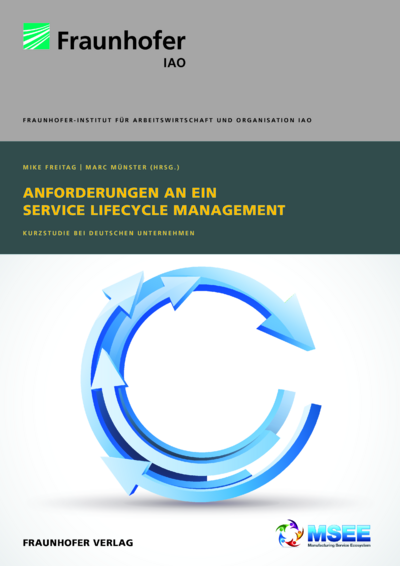On the one hand, long-term and stable long periods should be covered (service life) and on the other hand, a very high reactivity is appropriate in the event of unforeseen events. Organisatrice' presents these complementary operational requirements in a nutshell.
Technical Aspects
Product-oriented tracking is now technically rather easy to implement. Let's think here of networking via the 'Internet of Things'.
Organizational aspects
However, the story becomes more complex if the longevity on the commercial side is guaranteed.
Economic aspects
The economic viability of services must be regulated in the long term, both on the customer side and on the provider side.
Missing parts, outdated technical documentation, poor first-time fix rates and other issues are impacting your ability to grow your after-sales (=customer service) business. To overcome these problems, you need to transform the following areas
- Organize and manage spare parts
- Create, manage and provide up-to-date service information
- Predicting and avoiding product failures
Reflect customer relationships
- understand the customer's technical operating requirements
- know order history
Manage employees
- dispatch planning
- delegate responsibilities
- manage your own staff
Involve third-party contractors
- organize and control third-party services
Mapping technical reality
- provide technical documentation
- record events
The industry agrees that SLM (Service Lifecycle Management) solutions are not yet mature.
"IT-Support of development of services"
"... In the opinion of the majority of the service experts, IT support for the service development task has not yet been satisfactory. An improvement in this situation would be desirable for companies. Depending on the context of the service business, the individual companies therefore envisage different IT tools to support the respective service business. ... "
"IT-Support in Service Operations Management"
"... More than half of the service experts are dissatisfied with the IT support currently available for the Service Operations Management fields of action. In their opinion, better support through modern information and communication technologies is desirable. Only four of the companies surveyed stated that they were satisfied with the existing IT support for the operative service business. This different view was also expressed with approximately the same distribution with regard to the satisfaction of the mapping of the service business in the Enterprise Resource Planning (ERP) systems used by the companies. Some companies have made their ERP systems service-capable as a result of financial-intensive adaptation projects, while others have implemented their own IT solutions for mapping the service business. For example, service databases would be helpful to obtain an overview of all current and past service cases in the operative service business or customer relationship management (CRM) and sales opportunity management tools for IT-supported professionalization of service marketing and sales."
The long-term temporal framework
The main challenge of 'Service Lifecycle Management' is to provide a broad information base over time.
Specialized fields of application
- The more specific the product chain is, the more reliable the long-term support will be
- Automotive industry provides high support quality within a brand
- the life of the product corresponds to that of a consumer good
- the service entrepreneur is a brand representative
Generalized fields of application
- As soon as the product chain becomes generalized, it becomes increasingly difficult to maintain product compatibility in the long term.
- In the general installation industry, a functional segment often consists of a high variety of brands.
- the service life of the product corresponds to that of an investment good
- the service contractor is a generalist
You may consult the following website of the 'Fraunhofer Institute for Industrial Engineering and Organization'
Study by 'Fraunhofer Institut AIO'
You may consult the following website of the 'Fraunhofer Institute for Industrial Engineering and Organization'
respectively the following pdf
Service-Lifecycle-Management
Particularly in shipbuilding and aircraft, certain products have been developed because the product and service requirements are especially demanding here.
Lifecycle Management Products
- Enzykopädie der Wirtschaftinformatik
Example
PTC is a manufacturer of 3D software
- PLM Product Lifecycle Management
- SLM Service Lifecycle Management

